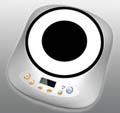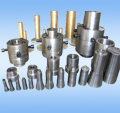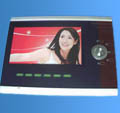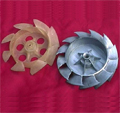

| Address: | PDS Enterprise Inc. 1650 West Artesia Blvd, Suite 278 Gardena, CA90248 |
| Phone: | 1-843-408-0142 |
| Email: | pdsenterprise@gmail.com sales@coolprototyping.com |


Home>Popular Page
20. Rapid Prototyping Explained
In the current poor economic climate, it is vital that businesses spend their capital wisely. For most (especially small business), the days of having money to spend on risky ventures are gone. Nowhere is this more true than in the domain of new product development and testing. Businesses simply can not afford to risk diminishing resources on a product that may never see the light of the sales day. For these very reasons, rapid prototyping production tooling technology is the solve method to this very serious problem.
The most advantageous feature of this technology is that it affords the designer the ability to incorporate changes during the construction process and before the item is actually put into use.
There are numerous engineering advantages to this exciting technology as well. Rapid prototyping allows the design process to actually yield a creation to scale, which also means that errors can be located and improvements made prior to actual implementation. This ability to factor in improvements at the development stage has become the 'gold standard' for manufacturing technology.
Rapid prototyping offers this ability to incorporate improvement to a design as the imperfections are discovered gives designers more control than ever. It also increases the odds of creating a flawless product far earlier in the development phase than has been possible in the past.
Computer aided design or animated modeling software is used in the initial design phase of this process. Those programs then deconstruct the item and virtually 'break' it in to extremely thin horizontal cross sections. The rapid prototype machine can then construct the item by re-creating those cross sections in layers until an actual physical form results. Most additive manufacturing creates a physical object my layering liquid, powder or a sheet material.
The advantage to finding and correcting flaws before implementation is also paramount from the marketing and sales standpoint. The process also has the advantage of the capability to make just a few items, which is also far more cost effective.
There are many different techniques available today that fall under the main category of rapid prototyping. Some incorporate the traditional layering technique, while others use medium blown or poured into molds or casts.
Still others use metals as the construction material. Geographic location is not a factor in deciding which manufacturer can be engaged. Since rapid prototyping machines are programmed from computer design-generated files, the completed file can simply be transmitted to the manufacturing facility for fabrication. The advantages represented by rapid prototyping technology quickly eclipse the costs.
 We are constantly looking for new products in order to grow our business and Invention Home has enabled us to streamline that process much more quickly.
We are constantly looking for new products in order to grow our business and Invention Home has enabled us to streamline that process much more quickly. Marsha Dunmyre
CA, U.S.A
Cool Prototyping Copyright 2008-2009 © All Rights Reserved. Rapid Prototyping






